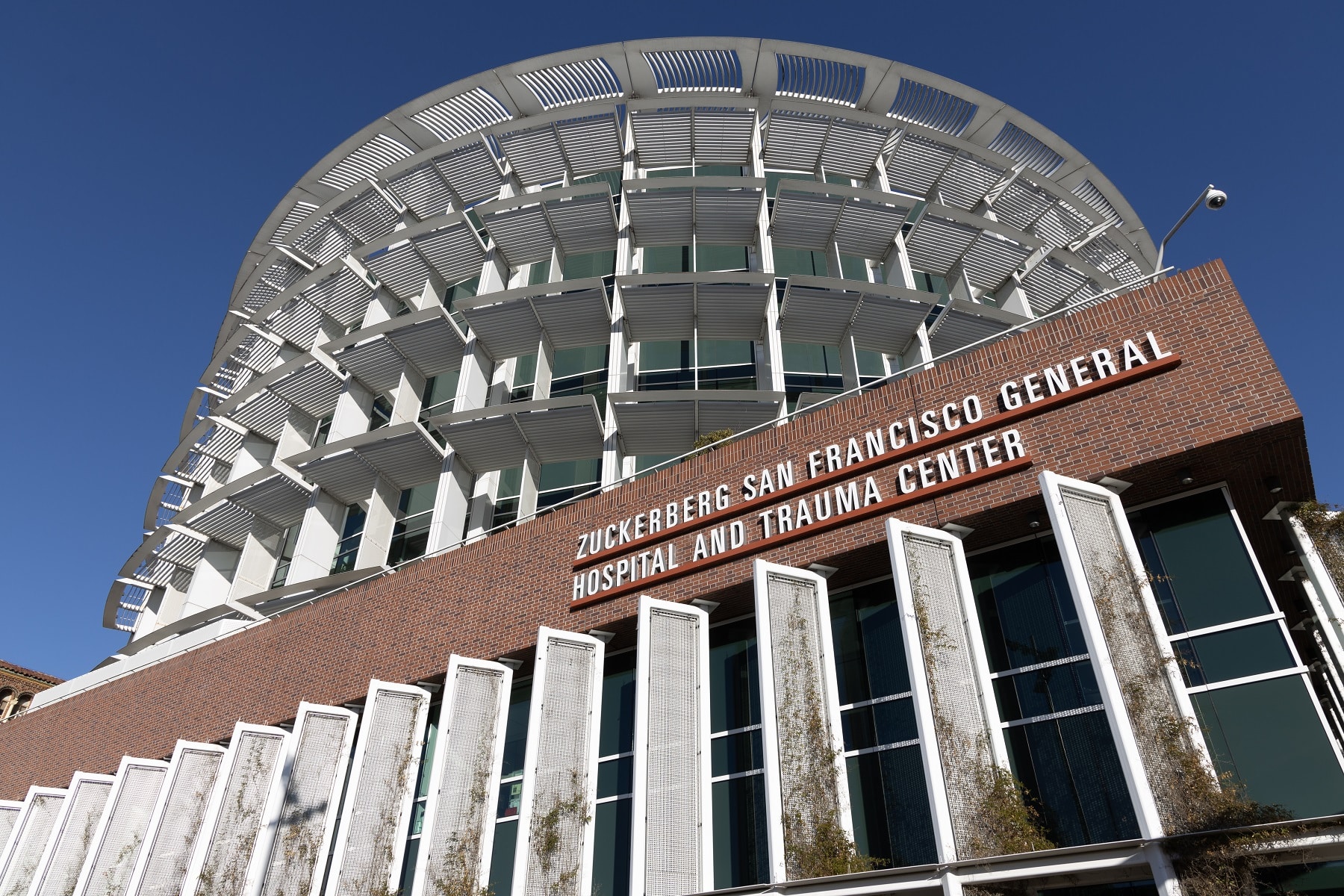For the imaging IT team at Zuckerberg San Francisco General Hospital, Enterprise Imaging offers a seamless, efficient and comfortable experience to meet radiologists’ daily challenges.
Zuckerberg San Francisco General Hospital (ZSFG) recently upgraded to version 8.2 of AGFA HealthCare’s Enterprise Imaging platform. This solution is solving radiologists’ challenges, helping them deliver excellent care with increased productivity, and enhancing their workplace wellbeing.
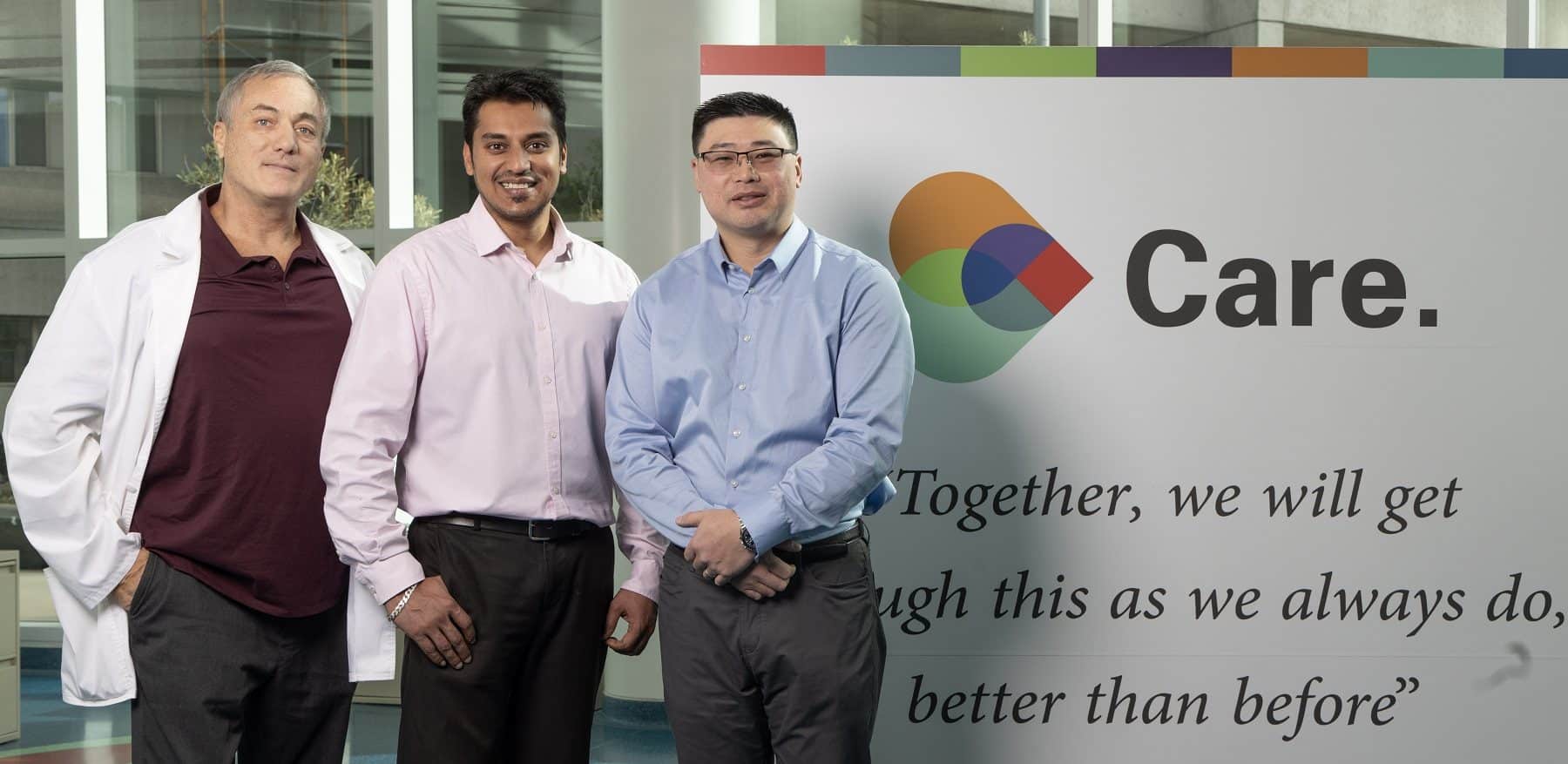
RJ Merck RT(R)
Radiology IT Supervisor
Clinical Imaging IT Administrator
Radiology and Enterprise PACS Administrator
Two towers, one image-enabled patient record
At the heart of Zuckerberg General’s imaging strategy are two separate yet connected towers: the Epic EMR and Enterprise Imaging, which was designed by AGFA HealthCare to enable health systems to create an Imaging Health Record™ – a single record of truth.
All orders for imaging exams, from all image-producing departments, are centralized in the unified EMR. This means a single order placer works with a single imaging repository. These two towers define the patient’s image-enabled medical record. The hospital’s end-goal is to have one image management system. Although some departments still have their individual image management systems, they can already use Enterprise Imaging as their image repository, and HL7 orders from the text digital record in the EMR can be connected to the visual record in the Enterprise Imaging platform.
A deeply knowledgeable imaging IT team
Zuckerberg San Francisco General Hospital is a community hospital and Level 1 Trauma Center in San Francisco with a historic partnership with the University of California, San Francisco (UCSF) on clinical training and research. The hospital made its first move to Enterprise Imaging in 2016, starting with mammography, and then replaced the legacy AGFA HealthCare radiology PACS with the Enterprise Imaging platform in 2018.
Shortly afterwards, the hospital was invited to become a pilot site for AGFA Enterprise Imaging, thanks in large part to its deeply knowledgeable team of imaging IT experts. The hospital reviews each Enterprise Imaging upgrade in order to evaluate new functionalities, identify potential ‘improvements’, and suggest additional features. This has made hospital’s imaging IT team a critical part of the continuing evolution of the Enterprise Imaging system.
“The system was so successful that we reduced the waiting time for a dermatology appointment from 6 months to 30 days. It was clear this was a winning strategy, for our patients and our own operational efficiency. So while we invested in expanding the frontend telehealth systems in our consortium clinics, we also began building a backend – the beginning architecture of an enterprise-wide imaging solution.”
We’ve been with AGFA HealthCare since 2005, so it has been a long journey together. We feel confident that AGFA HealthCare supports us in our ongoing ambition to deliver ‘all care for all patients and all images accessed anywhere’.
With AGFA Enterprise Imaging, both orders and studies are in the same system. That means the workflow can start as soon as the study exists, with steps for pre-procedure, during procedure, and post-procedure. There is a task-based workflow for tracking or escalation. It’s been a game changer for the radiologists, who can use the Enterprise Imaging as a pseudo-white board, with an overview of the progress of studies and tasks, without having to manually search for each one to see if it is complete.
A flow that fits
The biggest change for the radiologists when Enterprise Imaging was implemented, says Mr. Merck, was in the workflow. “With the platform, we can drive the workflow in a much more granular way. The radiologists appreciate that it ‘feeds’ them what they need, sorts tasks to their preferences, enables them to prioritize studies, supports escalation of care, and more.”
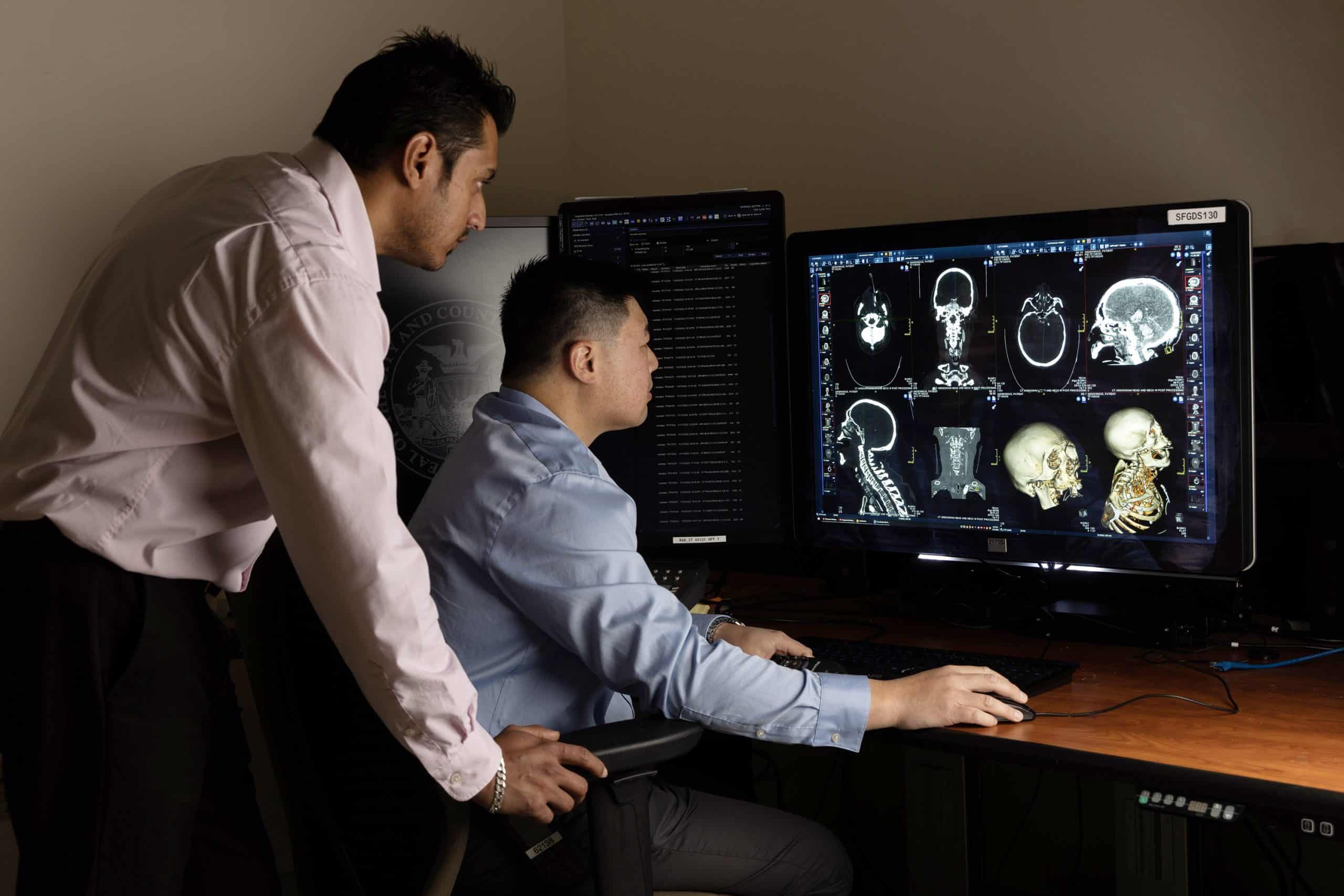
The workflow needs of the hospital’s radiologists can vary by subspeciality, type of exam, and individual doctor preference. With Enterprise Imaging, the imaging IT team can configure workflows to match all the different requirements. “We have a musculoskeletal specialist who reads 40,000 cases per year. He wants a list that allows him to go through them one by one in order, with maximum efficiency,” describes Mr. Merck. “For neurology images, the radiologist may need access to certain priors, while for chest X-rays, there are preferred hanging protocols and layouts. Mammography has retake workflows, so we have configured keywords to trigger those. For all of the different situations, the radiologists let us know what they want, and we can build it for them in the Enterprise Imaging platform.”
Stanley Lee, Radiology and Enterprise PACS Administrator, agrees, adding “With our previous PACS, orders were in a different database, but with Enterprise Imaging, both orders and studies are in the same system. That means the workflow can start as soon as the order exists, with steps for pre-procedure, during procedure, and post-procedure. There is a task-based workflow for tracking or escalation. The radiologists can thus, use the Enterprise Imaging platform as a pseudo-white board, getting an overview of the progress of studies and tasks, without having to manually search for each one to see if it is complete.”
Flexibility and configuration creating clinical value
“In Enterprise Imaging, you can basically achieve anything you want, by configuring the system in a certain way. It can grab a value from the HL7 order message, and attach that value to a keyword, a label, etc.,” comments Omar Arshad, Clinical Imaging IT Administrator.
This flexibility has enabled the imaging IT staff to address one of the key priorities of the Zuckerberg San Francisco General Hospital: ensuring follow-up of patients without a fixed address. As a ‘safety net hospital’ (legally required to provide healthcare for individuals regardless of their insurance status) in the economically diverse Mission neighborhood of San Francisco, the hospital often treats homeless patients in the Emergency Department. Once these patients leave the hospital, it can be difficult or even impossible to find them again. So the radiology team needs to identify any imaging findings as quickly as possible.
Mr. Lee explains, “We were able to use the existing color-coding feature in Enterprise Imaging to highlight which patients are housing challenged. When an imaging order is made in Epic EMR for a patient without a fixed address, this is flagged to Enterprise Imaging. We initiated a program that codes those patient studies in blue in the study list. When the reading radiologist opens the study list, they see it at one glance, and can expedite the read before the patient leaves the emergency department. This change has enabled the hospital to improve patient care in a meaningful way, for a specific group of vulnerable patients. We use other colors to give radiologists that immediate, visual cue as well: orange for emergency department/stat studies, pink for breast imaging, etc.”
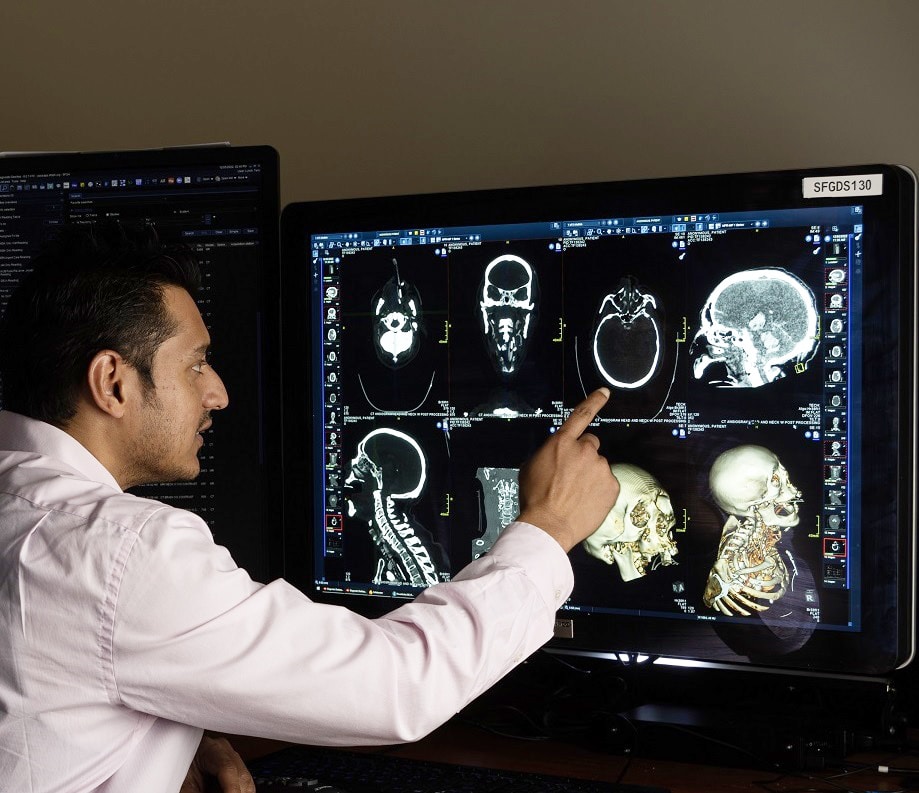
In AGFA Enterprise Imaging, you can basically achieve anything you want, by configuring the system in a certain way. It can grab a value from the HL7 order message, and attach that value to a keyword, a label, etc.
Optimizing data and supporting research requirements with Teachand Research
As a teaching hospital and a Level 1 Trauma center, Zuckerberg San Francisco General Hospital also has goals for research and publications. A new functionality, configured by Mr. Arshad in Enterprise Imaging, has been rolled out to enable the hospital to make use of existing and new data in the platform. “Our AGFA HealthCare VNA has data going back 15-20 years. To be used for research or teaching, the data must be anonymized to meet HIPAA’s requirements.”
This can now be done with just the click of a button, from within the Enterprise Imaging desktop. “If, for example, a doctor finds a study with a chest X-ray that they want to include in their research or training, they press the ‘Create a teaching file’ button on their desktop, and the data is anonymized and available for use. It can be downloaded, put in a PowerPoint presentation, added to a list of files, etc. But what if the patient is scheduled for a new chest X-ray in a year? The doctor wants to follow up on the patient, and include the new data in the research, as well. Within the teaching file, they can press the ‘Open original file’ button, and immediately find the patient’s identification, which is still kept completely separate from the teaching file.”
Encouraging feedback from radiologists
The feedback from the radiologists confirms that Enterprise Imaging was the right choice for the hospital. “Because we are a teaching institution, all of our residents rotate working between ZSFG, University of California, San Francisco, and the Veterans Administration hospital. This means they deal with multiple different image
management systems with different workflows and capabilities. We have gotten very good feedback on how our system compares to the others, especially from the people who tend to use a lot of the functionalities available,” comments Mr. Lee.
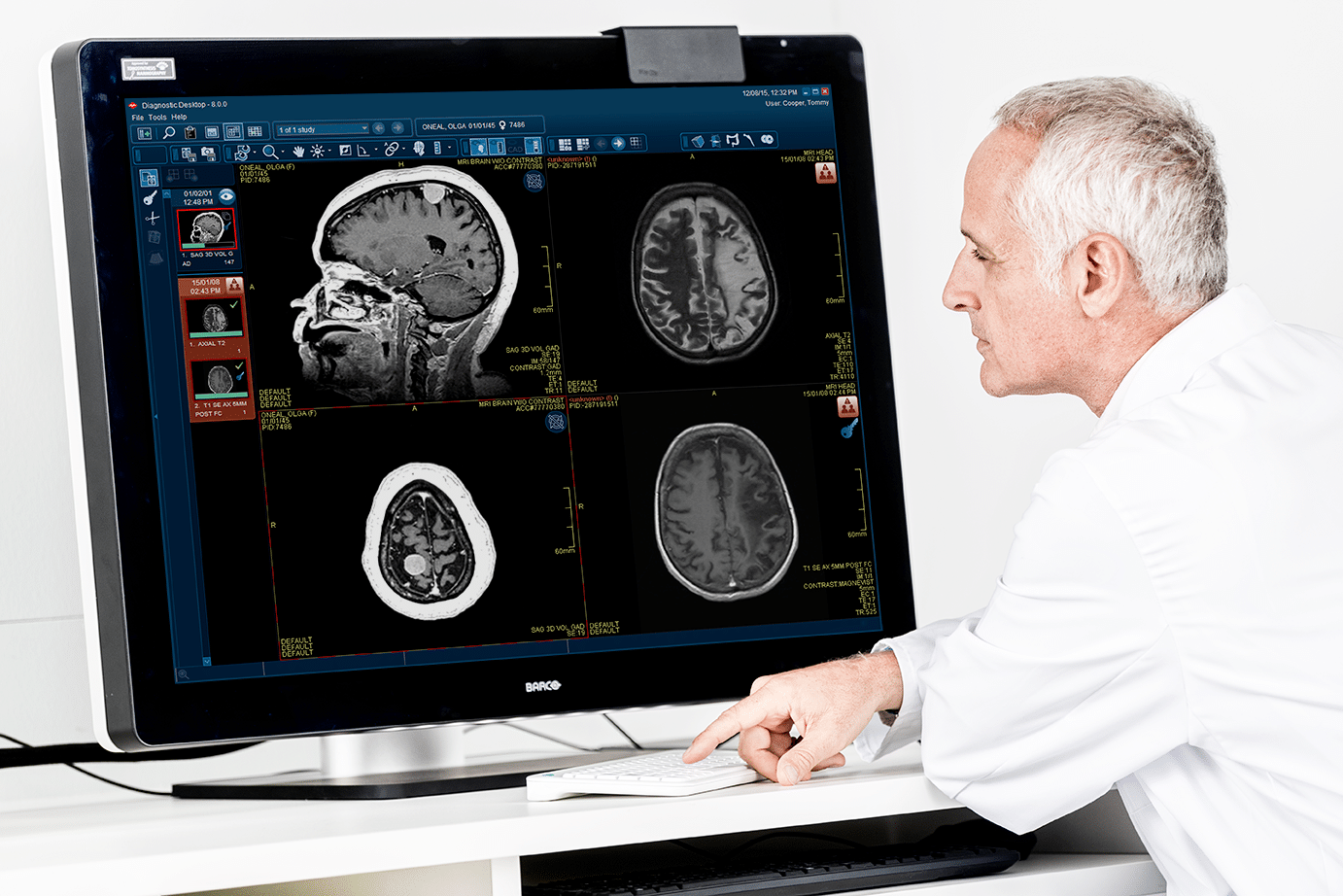
One radiologist who rotates through the University of California, San Francisco, has told us he definitely prefers Enterprise Imaging to the other systems he has used.
Next steps for the Enterprise Imaging workflow
With the success of Enterprise Imaging for the radiologists, the hospital is ready to bring cardiology into the platform as well. The enhanced cardiology capabilities offered by Enterprise Imaging 8.2 will play an important role, increasing mobility for the hospital’s cardiologists with “anywhere, anytime” diagnostic reporting and accelerated decision making. With the web-based ECG viewing and structured reporting for remote reading, cardiologists will be able to start, reassign, suspend and sign off on reports, from any computer or tablet. “Our cardiologists tend to work in different places and offices around the hospitals, so they are eagerly looking forward to the web-enabled cardiology suite,” comments Mr. Merck.
Our account executive takes care of us, and we have a partner-oriented relationship. We feel confident that AGFA HealthCare supports us in our ongoing ambition to deliver all care for all patients and ‘all images accessed anywhere’.
Partnership and support
Partnership and support
AGFA HealthCare is receptive to our feedback, which we appreciate, because we put a lot of effort into identifying and documenting issues. We have grown from a customer/vendor relationship to a partnership where we can work collaboratively on many things. It has been a big evolution,” Mr. Lee closes.
Mr. Merck agrees about the importance of the relationship with AGFA HealthCare. “We’ve been with AGFA HealthCare since 2005, so it has been a long journey together”.

About the Zuckerberg San Francisco General Hospital
About the Zuckerberg San Francisco General Hospital
Serves some 100,000 patients per year and provides more than 20% of all inpatient care for San Francisco. It is the city’s largest primary care facility, the only Level 1 Trauma Center in San Francisco and northern San Mateo, and the hub of the city’s disaster response in an earthquake or major crisis. A community hospital and Level 1 trauma center that partners with the University of California San Francisco (UCSF) on clinical training and research.
It is also home to the University of California, San Francisco research centers. The Enterprise Imaging for Radiology is currently used at Zuckerberg San Francisco General Hospital by radiologists, technicians, university faculty, and rotating residents across radiology, ophthalmology, cardiology, orthopedics and mammography.

